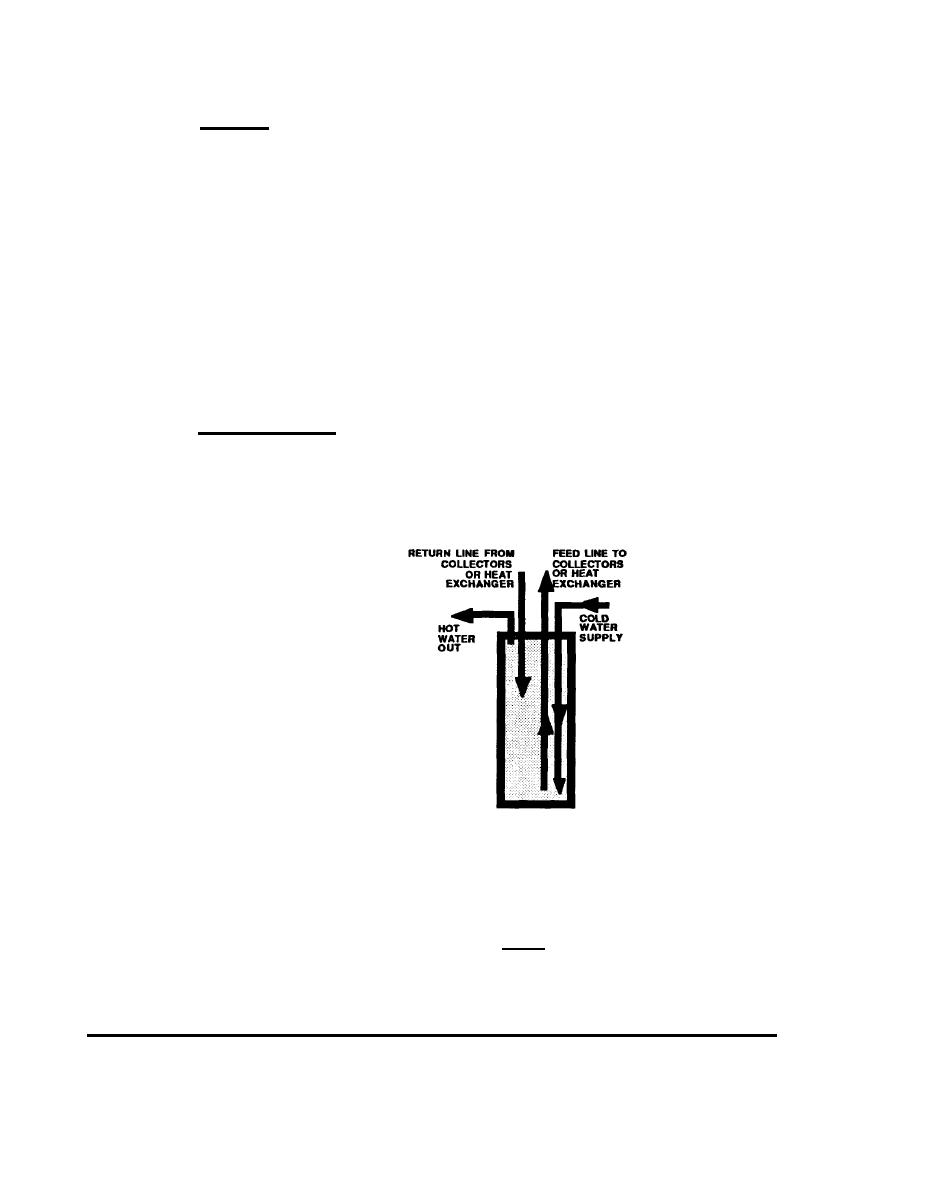

Custom Search
|
|

|
||
 4.3.11 Gauges. Gauges may be checked in two ways. The first is to bring
the gauge to a standard condition. For pressure gauges, remove them from the
system. They should read zero. For thermometers, take them out and put. them in
ice water or boiling water, depending on their temperature range.
The second method is comparison. Replace the suspect gauge with one you know
to be accurate. This is more practical with thermometers than with pressure
gauges.
A typical problem with thermometers is their location. For example, the
thermometer on a storage tank of 120 gallon capacity or less is usually installed in
the outlet piping of the tank. If it is more than a few inches from the tank, the only
time it will accurately report tank temperature is when water from the tank runs by it.
4.3.12 Storage Tanks, Problems with storage tanks may actually be caused
by piping errors. One of the most common is mixing up inlets and outlets. Another
problem is the length of dip tubes. If they are too short or too long, the tank may not
be able to store or deliver its full heat capacity. (Figure 4-9)
FIGURE 4-9
Correct Dip Tube
Lengths in a "Four-Stub
Tank
If the dip tubes are plugged with scale, or collapsed from heat, the system will not
store heat properly. Higher collector loop temperatures is one symptom of this.
Another problem may be an incorrectly positioned auxiliary heating element. For
the system to operate properly, auxiliary elements must be in the upper half of the
tank.
Finally, frequent replacement of anode rods indicates highly corrosive water or an
exposed metal surface.
TROUBLESHOOTING
4.3 TROUBLESHOOTING OPERATIONS
132
|
 |
|
 |
||